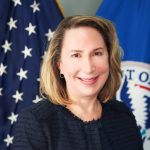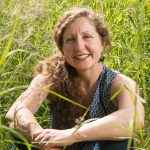Phase Out of Tongass Old-Growth Logging Can Begin Immediately
For Immediate Release on June 25, 2014
Contacts: Catherine Mater, President, Mater Engineering (541-753-7335); Dominick DellaSala, Ph.D., Chief Scientist, Geos Institute (541-482-4459 x 302, 541-621-7223); Nathaniel Lawrence, Natural Resources Defense Council (360-534-9900); Jim Furnish, Retired Siuslaw National Forest Supervisor (240-271-1650)
A recently released study of second growth availability on the Tongass National Forest shows that the U.S. Forest Service can end industrial old growth logging there within 5 years while, if it chooses, still increasing the total volume of trees harvested. The Forest Service announced in May that it was considering transitioning timber sales from old growth to second growth but within 10 to 15 years. The new study shows that transition can begin immediately and finish in no more than 5 years, shifting logging to second growth in previously logged and roaded areas outside of sensitive resource lands.
A 2014 study update commissioned by Geos Institute and Natural Resources Defense Council (NRDC) conclusively shows that there is immediate access to supplies of second growth trees that could be harvested in southeast Alaska as an alternative to harvesting old growth trees. The original study conducted by Oregon-based Mater Ltd. released in 2013 used Forest Service and Tongass Futures Roundtable data to estimate the number of second growth acres already pre-commercially thinned that could be harvested at 55-years of age. Prior research financed by The Nature Conservancy determined the desired log characteristics for a dedicated small log processing operation on Prince of Wales Island could be obtained from 55-year old hemlock and spruce stands.
The prior Mater study lacked spatially explicit analysis that was then updated by conducting GIS analysis in the targeted regions. With funding from Geos and NRDC, and assistance from the Tongass National Forest (for GIS data supply), that spatially explicit analysis was completed by Mater Ltd. and Oregon-based Conservation Biology Institute in May 2014.
“We needed to confirm two baselines in the 2014 on the ground analysis: that 55-year old stands are actually there (not estimated), and that those stands are immediately accessible by currently open roads within the Tongass National Forest” stated Catherine Mater, President of Mater Ltd. “We now are able to clearly show where those stands are located, and how much volume can be generated from them as an offset to harvesting old growth timber.”
According to Mater, “Working with the Forest Service was crucial in securing necessary GIS data for the on the ground analysis.” The analysis shows that beginning in 2015 over 25-million log board feet of timber per year derived from second growth could be harvested from the Prince of Wales area, increasing to an annual and sustained supply of over 40 million log board feet.
To help facilitate awareness of these new findings, a preliminary public portal link has been established through Conservation Biology Institute’s Databasin program.
According to Dominick DellaSala, Chief Scientist of Geos Institute and author of Temperate and Boreal Rainforests of the World, “We have a once-in-a lifetime opportunity to stop needless logging of old growth in one of the world’s last relatively intact rainforests with the added benefit of keeping carbon in the forest and out of the atmosphere where logging these forests would otherwise put it.”
The President’s Climate Action Plan of June 2013 and November 2013 Executive Order on Climate Change recognize the role that forests play in mitigating climate change impacts by absorbing (sequestering) atmospheric carbon and storing it long-term in long-lived trees. The Mater report shows how the Tongass, among the world’s most carbon dense forests, can be protected for their climate and wildlife benefits and still meet the region’s demand for timber supply.
Neil Lawrence, with Natural Resources Defense Council, also called on the Administration to act swiftly on these findings. “The Forest Service has a unique opportunity to end controversial timber sales and promote a robust economy in the region that is ecologically responsible. The Mater report demonstrates that transition is possible right now. That’s good news for everyone in the region who benefits from the Tongass’ amazing natural values, as well as local businesses looking for a stable, low-conflict future. All the Forest Service has to do is get on with the transition ASAP.”
The Tongass is not alone in efforts to transition to more sustainable forestry practices. Jim Furnish, former Siuslaw National Forest Supervisor, began a similar transition in the 1990s on the Siuslaw NF. “Back in the 1990s, we were also faced with the difficulty of a rapid transition. But we determined to make it happen as quickly as possible, and our local timber industry responded well. Today, the Siuslaw harvests 40 million board feet a year by cutting only second growth.”
The Mater report noted that the Forest Service should begin a pilot program immediately to demonstrate the economic feasibility of local processing for second growth logs. Second growth of similar age is already being utilized by Alaska’s private sector, suggesting that Tongass logs would be economically viable as well. Current subsidies for the Tongass timber program could be redirected to assist local mills in retooling for smaller logs.
>> Click here to read Jim Furnish’s 6/7/14 opinion piece in the Juneau Empire.
>> Click here to listen to Dominick DellaSala’s 6/7/14 interview on Jefferson Public Radio.
Join the Cornerstone Network
Sign up with a monthly donation and become part of our Cornerstone Network. Network members recieve the messages posted here first, delivered directly to your inbox. Your ongoing support is the foundation of our work.

 Samantha Medlock is President of Climate Risk Advisors, helping communities and organizations advance equity, sustainability, and resilience. Her career began chasing floods as a local official in Texas Flash Flood Alley—a hands-on experience that still shapes her approach to climate and disaster risk management.
Samantha Medlock is President of Climate Risk Advisors, helping communities and organizations advance equity, sustainability, and resilience. Her career began chasing floods as a local official in Texas Flash Flood Alley—a hands-on experience that still shapes her approach to climate and disaster risk management.
 Arsum is the Senior Adaptation and Coastal Resilience Specialist for the National Wildlife Federation’s Southcentral Region. In this role, she advances climate adaptation efforts, with a focus on nature-based approaches to address the impacts of climate change and extreme events across the Gulf region. She has authored and co-authored numerous publications on climate impact assessments and adaptation solutions. Additionally, she regularly participates in state-based coastal resilience and hazard mitigation planning across the Gulf, collaborating with regional and local stakeholders.
Arsum is the Senior Adaptation and Coastal Resilience Specialist for the National Wildlife Federation’s Southcentral Region. In this role, she advances climate adaptation efforts, with a focus on nature-based approaches to address the impacts of climate change and extreme events across the Gulf region. She has authored and co-authored numerous publications on climate impact assessments and adaptation solutions. Additionally, she regularly participates in state-based coastal resilience and hazard mitigation planning across the Gulf, collaborating with regional and local stakeholders. Frank is the former President of the Reinsurance Association of America. Frank currently serves on the Advisory Board of the OECD’s International Network for the Financial Management of Large-Scale Disasters, the RAND Center on Catastrophic Risk Management and Compensation, and the University of Cincinnati’s Carl H. Lindner III Center for Insurance and Risk Management Advisory Board.
Frank is the former President of the Reinsurance Association of America. Frank currently serves on the Advisory Board of the OECD’s International Network for the Financial Management of Large-Scale Disasters, the RAND Center on Catastrophic Risk Management and Compensation, and the University of Cincinnati’s Carl H. Lindner III Center for Insurance and Risk Management Advisory Board. Jim is a multilingual world traveler. Based in Bavaria during the 1970s, Jim spent most of this period in India, Afghanistan and Nepal, where he founded and operated a charitable medical clinic serving Tibetan Refugees. He settled in Oregon in 1983 on a forested ranch in the Umpqua National Forest.
Jim is a multilingual world traveler. Based in Bavaria during the 1970s, Jim spent most of this period in India, Afghanistan and Nepal, where he founded and operated a charitable medical clinic serving Tibetan Refugees. He settled in Oregon in 1983 on a forested ranch in the Umpqua National Forest. Dr. Micah Hahn is an Associate Professor of Environmental Health in the Institute for Circumpolar Health Studies at the University of Alaska-Anchorage. She received her joint PhD in Epidemiology / Environment and Resources from the University of Wisconsin-Madison and her MPH in Global Environmental Health from Emory University. Subsequently, she was a postdoctoral fellow for the CDC Climate and Health Program, and in this position worked collaboratively with the CDC Division of Vector-borne Diseases and the National Center for Atmospheric Research. Her research focuses on understanding the health impacts of climate change and working with communities to develop locally-relevant adaptation and resilience-building strategies. Dr. Hahn is also on the Management Team of the Alaska Climate Adaptation Science Center.
Dr. Micah Hahn is an Associate Professor of Environmental Health in the Institute for Circumpolar Health Studies at the University of Alaska-Anchorage. She received her joint PhD in Epidemiology / Environment and Resources from the University of Wisconsin-Madison and her MPH in Global Environmental Health from Emory University. Subsequently, she was a postdoctoral fellow for the CDC Climate and Health Program, and in this position worked collaboratively with the CDC Division of Vector-borne Diseases and the National Center for Atmospheric Research. Her research focuses on understanding the health impacts of climate change and working with communities to develop locally-relevant adaptation and resilience-building strategies. Dr. Hahn is also on the Management Team of the Alaska Climate Adaptation Science Center. Michael is a former Founding Principal of Resilient Cities Catalyst, a global non-profit helping cities and their partners tackle their toughest challenges. He is currently the Executive Director of Climate Resilience Academy at the University of Miami.
Michael is a former Founding Principal of Resilient Cities Catalyst, a global non-profit helping cities and their partners tackle their toughest challenges. He is currently the Executive Director of Climate Resilience Academy at the University of Miami. Dr. Quintus Jett is a consultant, educator, and strategist for public causes. He has a doctorate in Organizations & Management from Stanford University, and a two-decade faculty career which spans schools, departments, and programs of business, engineering, liberal studies, divinity, and public and nonprofit management. Following Hurricane Katrina in 2005, Dr. Jett launched a volunteer project in New Orleans, which enlisted residents, students from over a dozen colleges and universities, and hundreds of others to field map the city’s Gentilly district, Lower Ninth Ward, and New Orleans East. Dr. Jett is an innovator in higher education, bridging the divide between academic research and the other priorities of the modern university, including student access and diversity, community engagement, and providing foundations for life-long learning in today’s rapidly changing world.
Dr. Quintus Jett is a consultant, educator, and strategist for public causes. He has a doctorate in Organizations & Management from Stanford University, and a two-decade faculty career which spans schools, departments, and programs of business, engineering, liberal studies, divinity, and public and nonprofit management. Following Hurricane Katrina in 2005, Dr. Jett launched a volunteer project in New Orleans, which enlisted residents, students from over a dozen colleges and universities, and hundreds of others to field map the city’s Gentilly district, Lower Ninth Ward, and New Orleans East. Dr. Jett is an innovator in higher education, bridging the divide between academic research and the other priorities of the modern university, including student access and diversity, community engagement, and providing foundations for life-long learning in today’s rapidly changing world. Scott is Monfort Professor of Atmospheric Science at Colorado State University. He has written about 100 publications in the peer-reviewed climate literature, is a former editor of the Journal of Climate, and served for five years as founding Science Chair of the North American Carbon Program.
Scott is Monfort Professor of Atmospheric Science at Colorado State University. He has written about 100 publications in the peer-reviewed climate literature, is a former editor of the Journal of Climate, and served for five years as founding Science Chair of the North American Carbon Program. Linda has many years of experience in disaster preparedness and resilience. She has been an elected official on the Linn County Iowa Board of Supervisors, Chair of the Metropolitan Planning Organization, the East Central Iowa Council of Governments, the statewide Mental Health Developmental Disability and the Linn County Board of Health. Langston is a former president of the National Association of Counties (2013-2014).
Linda has many years of experience in disaster preparedness and resilience. She has been an elected official on the Linn County Iowa Board of Supervisors, Chair of the Metropolitan Planning Organization, the East Central Iowa Council of Governments, the statewide Mental Health Developmental Disability and the Linn County Board of Health. Langston is a former president of the National Association of Counties (2013-2014). Ken works with families and organizations as a mediator, organizational consultant, trainer and facilitator. Along with his passion for helping people prepare for and reduce climate change, Ken also volunteers as a mediator through Mediation Works and is passionate about supporting youth through mentoring with Boys to Men of Southern Oregon.
Ken works with families and organizations as a mediator, organizational consultant, trainer and facilitator. Along with his passion for helping people prepare for and reduce climate change, Ken also volunteers as a mediator through Mediation Works and is passionate about supporting youth through mentoring with Boys to Men of Southern Oregon. Matthew is a retired high school teacher who was once honored as Oregon High School Social Studies Teacher of the Year. Before his teaching career he was in the restaurant business in Portland. He is also a lawyer who has been a member of the Oregon State Bar Association since 1980.
Matthew is a retired high school teacher who was once honored as Oregon High School Social Studies Teacher of the Year. Before his teaching career he was in the restaurant business in Portland. He is also a lawyer who has been a member of the Oregon State Bar Association since 1980. Andrea is the Resilience Policy Advisor for the North Carolina Office of Recovery and Resiliency. She works across state agencies and with local governments to increase the state’s resilience to the impacts of climate change.
Andrea is the Resilience Policy Advisor for the North Carolina Office of Recovery and Resiliency. She works across state agencies and with local governments to increase the state’s resilience to the impacts of climate change.